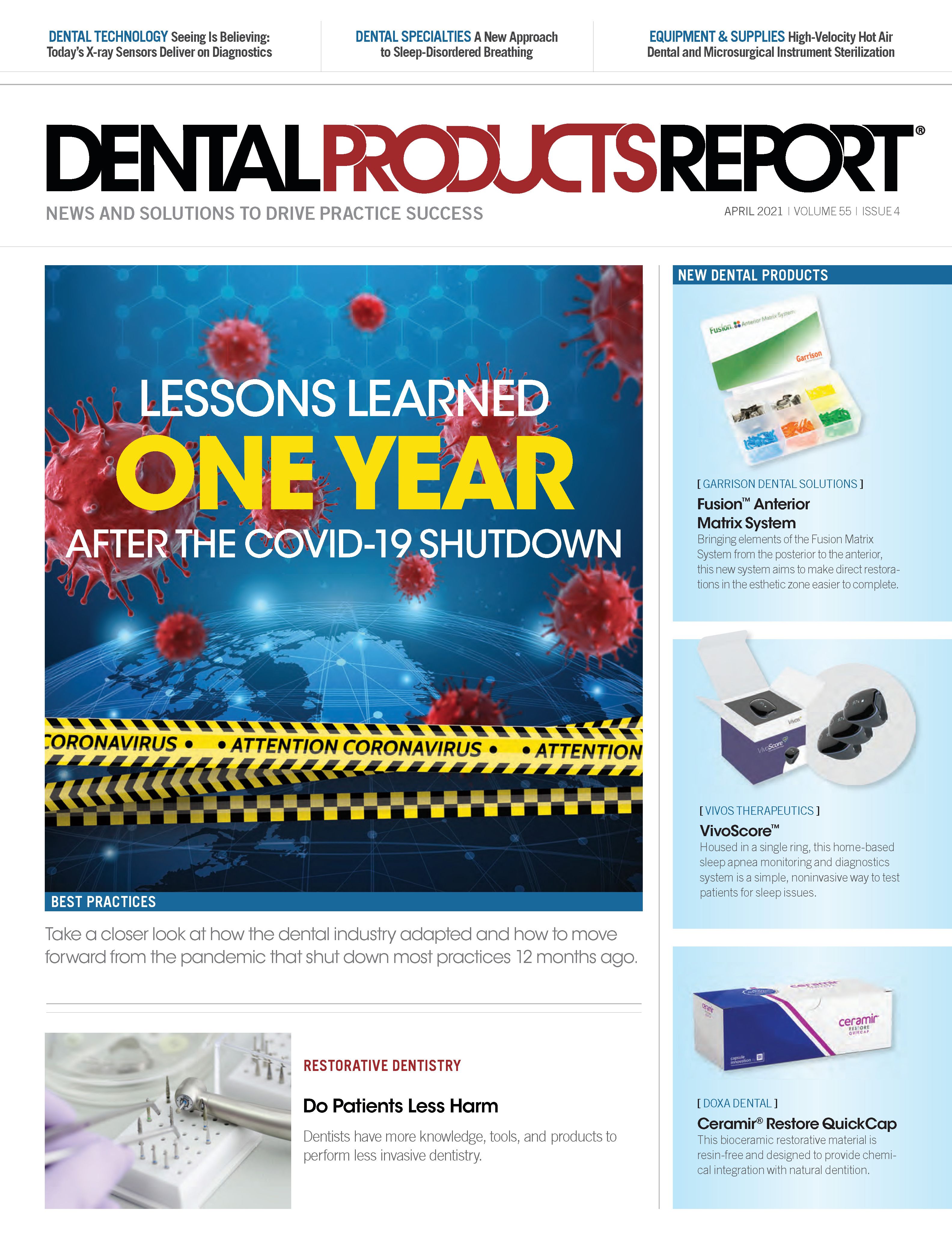Looking Forward, Looking Back
The events of the past year have a lot to teach us, but only if we’re willing to learn.
©Blue Planet Studio / stock.adobe.com

I love history. However, I don’t love it in the way of memorizing names and dates. I love the lessons of history. I love the way that a problem presents itself and is then solved over time. Sometimes things are no-brainers, like seat belts, for instance. Other times, the lessons require convincing individuals of the reason behind the change, such as infection control.
In the 1800s, when the theory of infection by microscopic organisms came about, many scoffed at the idea of “invisible bugs that make people sick.”
Yet, lessons were still learned, and the world became a much better and safer place because of the hard work of those who believed and eventually had the science to back them up. Both seat belts and infection control have saved countless lives and greatly lowered the number of individuals who experience injuries or infections.
I truly feel that the practice of dentistry can be a lot like a pilot flying an aircraft. By that, I mean that pilots are always encouraged to keep learning and vigilantly study every flight they make. Pilots are told to evaluate every landing—even the great ones—to learn what was done right and what could have been done better. I love the expression “Any landing you walk away from is a successful one,” but post-evaluation is critical. A professional is always obligated to evaluate their successes and, more importantly, their failures to improve outcomes.
These lessons bring me to the point of my column this month. By the time you read these words, it will have been over a year since dentistry was shut down due to severe acute respiratory syndrome coronavirus 2 (SARS-CoV-2) and the coronavirus disease 2019 (COVID-19) infection it caused. I remember watching a press conference from the White House when Seema Verma, then administrator of the Centers for Medicare & Medicaid Services, announced that all elective dental procedures should stop. That date was March 18, 2020. My staff and I were watching the press conference live, and I turned to my staff and said, “We’re done.” They all nodded, and like the efficient team they are, began closing out our schedule and preparing the office for a shutdown of at least 14 to 21 days, which was the American Dental Association’s recommendation at the time.
My office was closed until May 18, 2020, and in the 60 days that passed, the infection control world turned on its head, figuratively. Hopefully, none of us will have to deal with a similar situation again in our practice lifetimes, but we can never know. All we can do is be prepared.
No Swift Actions
Having never seen anything like a global pandemic in our lifetimes, we were a bit flat-footed when it struck. Hopefully, we can be better aware and prepared for future problems.
Giving credit where it is due, our “early warning systems” of dangerous infectious agents are incredibly robust and accurate. The original SARS that showed up in China in the early 2000s could have potentially been worse for the United States than what we are currently experiencing. However, the Centers for Disease Control and Prevention and its equivalent in other countries spotted it quickly. Through vigorous quarantining and contact tracing, it shut the spread down in an incredibly efficient manner. SARS never truly got out of control. It certainly could have, but the safety net of our public health services held firm.
The outbreak of SARS-CoV-2 was a different story. From what I can discern, there was much less cooperation from the Chinese government this time around, and that allowed the virus to spread more or less unchecked for the first 1 to 2 months. However, the US government made no concentrated effort due to a lack of direction from the executive branch.
Lessons Learned
I feel the very first takeaway from this pandemic is the importance of a domestic supply chain or a frequently overturned emergency supply of critical equipment. Gloves have a limited shelf life, but the stocks could be rotated by selling gloves before they expire and begin to breakdown. This would allow a department such as the Federal Emergency Management Agency to always have masks, gowns, and gloves in a national stockpile that our health care system can access in times of mass infections with limited supply chain support.
We learned a hard lesson by allowing mask and glove manufacturing to be concentrated in foreign countries. The Department of Health and Human Services says 95% of surgical masks and 70% of N95 respirators are manufactured overseas. As the pandemic worsened, some factories abroad closed because of the virus, whereas some countries refused to export masks for fear of needing them within their own borders.
With supply issues and counterfeit masks, many frontline workers, including those in dentistry, worked in dangerous environments with subpar personal protection equipment (PPE) that did not meet the approved standards. Yet, there is no way of knowing.
There is the global nitrile glove market. It is estimated that 99% of nitrile gloves are manufactured in Malaysia, Thailand, Vietnam, and China. For similar reasons, the glove supply has dropped precipitously, and the price of gloves has risen 175% since last year.
The US needs to reverse its dependence on foreign suppliers of critical health care goods and equipment. Although supplies have been limited, critical supplies have remained available. Next time, we may not be so lucky.
New Equipment
I’ve said many times that dentistry was better prepared for a pandemic than many other health care specialties simply because we have been so cautious about infection control since the 1980s. And yet, there are new products that help us practice more safely.
Auxiliary air cleansing vacuum systems such as the Aegis Aerosol VacStation from CAO Group, Inc, have allowed doctors and teams to practice in safer environments as they literally suck up and purify aerosols as soon as they leave a patient’s mouth. We’ve also seen UV light systems that can kill viruses on surfaces and in the air.
Companies are now selling large air purification devices that use a variety of filtration methods, including ozone to eliminate virus particles as they circulate through the air.
We’ve also learned that devices that function as auxiliary suction systems play a vital role. The original idea behind devices such as Zyris’ Isolite, the DryShield, and the Mr. Thirsty Kit from Zirc not only provide better access to the field but also by connecting to the high-speed vacuum system, grab a high percentage of aerosols before they even leave the mouth.
I’ve been particularly impressed with an ozone system called “Air & SurfacePro+”. Dr. Deborah Birx, who headed the White House Coronal Virus Task Force in 2020 has endorsed the product. In Mid-March 2021 the company announced that Dr. Birx will join the parent company ActivePure Technologies as Chief Medical & Scientific Advisor. A person of her skill set is a powerful endorsement.
Another Vote for Digital Dentistry
Forgetting all the other advantages of the systems we have in place, digital also provides greater infection control. There is no biohazard to a digital impression or to models or other dental devices created by a 3D printer. There is no potential for cross-contamination of a crown, bridge, or denture that comes out of Axsys’ Versamill 5X400. That device is cranking out restorations in my office as a regular part of our procedural day, and I have ZERO concerns regarding any potential of it spreading pathogens.
The fewer things that go in patients’ mouths or start in the mouth, the less chance of cross-contamination we have. Although a computer virus might ruin computer files, it certainly won’t spread COVID-19.
Be Nice
I’m not sure how it happened, but somehow this whole pandemic became politicized. Mask wearing became a hot-button issue of “control” instead of science. Somehow the concept of preventing infection became a subject for argument. The whole thing never made any sense to me, but then I’m a huge fan of science. Politics? Not so much. Yet, I will always be in favor of being kind to one another. Nobody ever went wrong loving their neighbor. Maybe that will also be a takeaway from the terrible events of the last year.
Wrapping Up
Our health care system functioned for almost a year under a “bend but don’t break” philosophy. We are still working our way out of this. Heck, I still cannot get my favorite brand of gloves from my preferred supplier because the factory has so many backorders.
Although no one will admit it, I believe the reason government experts did not encourage mask use by the general population was that there were not enough masks, and they needed as many as possible for hospital staff who were trying to save lives. We did not have a sufficient PPE supply to fight through COVID-19’s first wave.
Overall, I’m very proud of the individuals in this profession. In the short span of 1 to 2 months, each office devised an opening plan and put everything in place to accomplish this objective. My staff and I are still working in N95s every day, and we probably will continue to do so for the rest of my career. I feel it makes us safer. The really good news is that our profession is coming back strong.
Here are a few things to think about: almost 50% or more of our patients are anxious about what we do. They are often looking for a reason to avoid us, and yet, with the perfect excuse right in front of them, most offices are still busy. Why? I believe the reason is simple. Patients trust us. They know we have their best interests at heart. They understand we are doing everything we can to keep them safe and healthy. That is the strength that we have created together as a profession. We have every reason to be proud of that. Better times are on the horizon.
I’d also like to give a big shout-out to the incredible people in the dental supply industry. Those folks managed to get their hands on the necessary things that we needed to keep the profession running… and running safely. I was amazed at how hard those people worked. My job here at Dental Products Report allows me to see things from the non-doctor side of things and there was a tremendous effort made by lots of people to get us back to business as normal. Lots of people worked long hours and weekends to put a supply chain that was in tatters back together in a very short span of time. We owe them a great deal of thanks. Make sure your preferred suppliers understand how grateful you are. They deserve it.
